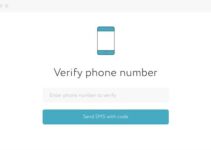Any business owner will know that recruitment is a time-consuming exercise, and time costs money. From evaluating the requirements of each role to posting job adverts, screening CVs and interviewing candidates, the entire process can take hours out of your day and keep you from other tasks. Even those companies with dedicated HR teams can appreciate the additional burden that hundreds if not thousands of applicants can place on resources. Further, job sites are not cheap, charging between £99 and £249 per job ad, according to Glassdoor. So how can tech help you reduce the time and expense of making a good hire?
First and foremost, smart employers are using networking sites to connect more than ever before. More than 20 million companies are listed on LinkedIn, and 90% of recruiters regularly use the platform, with 14 million open jobs available. And according to LinkedIn themselves, social professional networks are the number one source of quality hires, ahead of internet job boards and employee referrals. But why are networks such as LinkedIn, and tools like Matchr, such a great place to hire.

Img source: hrinasia.com
The first reason is that they promote transparency. An applicant can put anything they like on their CV because nobody besides the recipient will see it. However, the whole premise of LinkedIn is that its users are connected to people they really know. Therefore it is less likely that a user will lie about their credentials.
Secondly, LinkedIn offers a much wider view of the candidate than two pieces of A4 paper. You get to see a whole range of information about them including anything they’ve contributed to LinkedIn, recommendations and endorsements.
Thirdly, if the user has enabled the correct settings, you’ll also see if they’re open to offers. This means that, as an employer, you can headhunt worthy candidates who might not have even considered applying to you. It also means you can find candidates without having to spend anything on posting a job advert, and you don’t have to wait for the CVs to pour in the door. Further, you can screen candidates according to your criteria, approaching only those who meet your minimum skills requirements. No more filtering through piles of irrelevant CVs – you can go straight to those you’d shortlist.

Img source: amjstaffing.com
Of course, to hire successfully on a professional network site, you’ll need to present your business professionally so that it appeals to prospects. This means preening your own profile and creating a highly professional profile for your company. LinkedIn has plenty of tools to help you showcase your business in the best possible light.
Once you’ve created or optimized your company page, you can, of course, advertise your new vacancies for which LinkedIn has various pricing models. However, if you post an update, anyone following your company will see it – so once you’ve built a following, you may find you no longer need to pay for job posts. Alternatively, take a look at some of the ATS software deals which include LinkedIn postings at no extra cost.
Here is an article by Recruit CRM on the Benefits of an Applicant Tracking System (ATS) that will tell you why an ATS is worth investing in.
An ATS is an applicant tracking system which pre-screens your candidates before they arrive on your desk. You can tell the system what your minimum requirements are, and it will filter through all of the CVs you receive, weeding out those that don’t mention those core keywords. ATS software can save large businesses hundreds if not thousands of hours and consequently, thousands of pounds. It is not particularly expensive. However, there is a downside – ATS software sometimes filters out candidates who should have made it through the process. This might be because they don’t include appropriate keywords on their CV or they use a CV format that simply doesn’t work with the system. Busier companies may not regard this as an issue – they will receive hundreds of applicants for each role and not, therefore, mind losing a few unnecessarily.

Img source: https://www.oliverparks.com/
Once you have a list of prospective candidates or a pile of screened CVs, both LinkedIn and Twitter can be invaluable as screening tools. “Both platforms can help establish that a candidate is focused and committed,” explains Martin Carline. “They allow an insight into the candidate’s true background and can provide clues as to their skill level, passion, and online influence. Twitter, in particular, offers a candid insight into a candidate’s attitude towards their peers and industry, revealing their thoughts, understanding, and levels of participation.”
Whilst LinkedIn and Twitter are the main tools for acquiring and screening candidates, Facebook and Instagram still have a part to play. “In today’s ultra-connected world, it IS our business how candidates spend their free time,” explains Carline. “What groups are they connected and involved with? What views do they publish? Who do they associate with? Once a candidate works for your company, this persona can add value to your company’s image – or it can taint it. Hiring candidates who share your company’s values can help avoid conflict and damage to your reputation down the line.”




